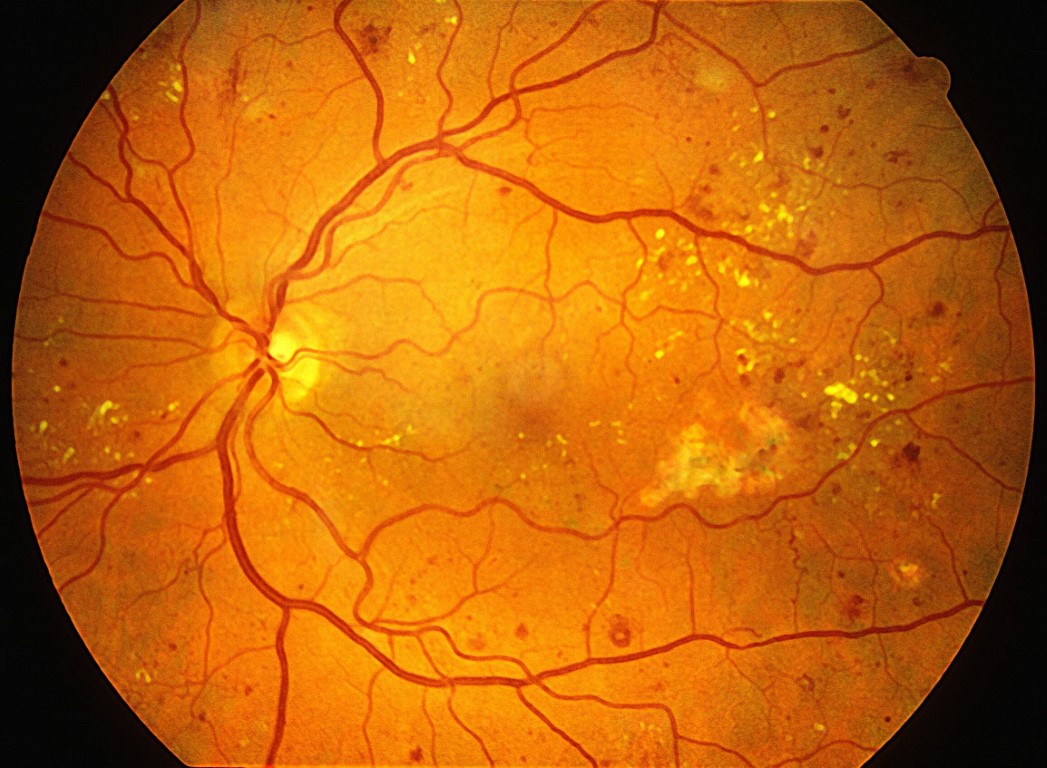Diabetic Eye Disease
What is Diabetic eye disease?
Diabetic eye disease encompasses a group of eye conditions, including diabetic retinopathy, diabetic macular edema, and cataracts, which are more common among those with diabetes.
Diabetic eye disease is primarily caused by high blood sugar levels, which can damage the blood vessels in the retina, the light-sensitive tissue at the back of the eye. If left untreated, it can result in swelling, bleeding, and even retinal detachments, making it crucial for individuals with diabetes to understand the condition and its potential consequences.

Diabetic Retinopathy
Copyright notice: This image was originally published in the Retina Image Bank® website
Author: Henry Kaplan, MD, Photographer: Henry Kaplan, MD
Title: Severe NPDR, Year: 2013, Image Number: 5343
©The American Society of Retina Specialists.
How is Diabetic eye disease Treated?
Effectively managing diabetic eye disease involves a combination of proactive measures and specialized eye care. While it may not be entirely curable, there are several treatment options available to slow its progression and preserve your vision:
- Strict Blood Sugar Control: Maintaining target blood sugar levels through proper diabetes management is essential in preventing or delaying the onset and progression of diabetic eye disease.
- Regular Eye Examinations: Routine eye examinations by an ophthalmologist or optometrist are critical for early detection of diabetic eye disease. Early intervention can significantly improve treatment outcomes.
- Laser Therapy: In cases of diabetic retinopathy, laser therapy may be recommended to seal leaking blood vessels and prevent further damage to the retina.

Panretinal Photocoagulation (PRP)
Copyright notice: This image was originally published in the Retina Image Bank® website
Author: Henry Kaplan, MD, Photographer: Henry Kaplan, MD
Title: PRP laser, Year: 2013, Image Number: 5338
©The American Society of Retina Specialists.
- Intravitreal Injections: For diabetic macular edema, intravitreal injections of medications like anti-VEGF drugs can help reduce swelling and improve vision.
- Cataract Surgery: If cataracts develop as a result of diabetic eye disease, cataract surgery might be required.
- Retina Surgery: For significant bleeding or retinal detachments, surgery may be necessary to restore and preserve vision.
- Lifestyle Modifications: Leading a healthy lifestyle by maintaining a balanced diet, regular exercise, and avoiding smoking can contribute to better overall eye health.
At Texas Macula & Retina, we understand the impact that diabetic eye disease can have on your quality of life, and we are dedicated to providing comprehensive eye care and the latest treatment options. Our experienced team is here to support you in managing your condition and preserving your vision.
If you or a loved one are concerned about diabetic eye disease or seeking personalized guidance on treatment options, please don’t hesitate to contact us. Together, we can work towards safeguarding your eye health and maintaining clear vision for the future.

